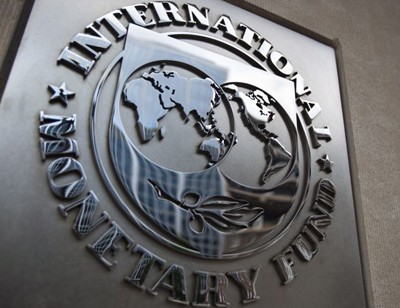IMF sees higher global growth warns of deflation risks
Post on: 14 Сентябрь, 2015 No Comment

Related News
WASHINGTON (Reuters) — The International Monetary Fund raised its global growth forecast for the first time in nearly two years on Tuesday, saying fading economic headwinds should permit advanced nations to pick up the mantle of growth from emerging markets.
But the IMF warned richer nations were still growing below full capacity, and it added the specter of deflation to its long list of risks that could derail the nascent recovery.
In an update to its World Economic Outlook report, the Fund predicted the global economy would grow 3.7 percent this year, 0.1 percentage point higher than its October projection. It said it sees growth of 3.9 percent in 2015.
Olivier Blanchard, the IMF’s chief economist, said less government austerity and uncertainty, and a healthier financial system, were all allowing growth to speed ahead.
The basic reason behind the stronger recovery is that the brakes to the recovery are progressively being loosened, Blanchard told reporters on a conference call.
The IMF forecast higher growth in advanced economies this year but kept its outlook unchanged for the developing world, where higher exports to rich nations were expected to be offset by weak demand at home.
The United States is likely to be one of the bright spots, after a budget deal in Congress reduced some of the government spending cuts that had weighed on domestic demand.
U.S. data last month showed a build-up in business inventories, the most since 1998, helped boost third-quarter GDP, and the IMF expects domestic demand to lift growth to 2.8 percent in 2014. In its previous forecast in October, it looked for growth of 2.6 percent.
The IMF also saw a rosier outlook for Britain, amid cheap credit, a boost in consumption and greater confidence. It raised its growth forecast to 2.4 percent in 2014 from 1.9 percent in October. It was the largest increase among major economies, when accounting for rounding.
Japan’s prospects also surprised to the upside, as the IMF predicted further fiscal stimulus should help offset some of the impact from a higher consumption tax planned for this spring. However, the Fund said Japan must focus on consumption and investment to keep growth sustainable, rather than relying on government spending and exports.
Japan launched an ambitious economic program last year to shock the economy out of nearly two decades of deflation.
JAPAN-STYLE RISKS
While the IMF said Japan is unlikely to slip back into deflation, it warned that other rich nations now risk the same problem of sluggish price growth, which can happen when economies linger well below their full potential. Disinflation can turn to economically debilitating deflation if there is a negative shock to economic activity, the IMF warned.
A falling spiral of prices would weaken demand by making cash more valuable over time, discouraging consumption. It also increases the burden of debt, a big problem for highly indebted places like the United States and the euro zone.
The lower the inflation rate, and. the larger the deflation rate, the more dangerous it is for the euro recovery, Blanchard said. He said the IMF’s models showed a 10 to 20 percent chance prices could start to fall in the euro currency bloc.
The IMF urged central banks to avoid raising interest rates too soon, and called on the European Central Bank in particular to help sluggish demand by boosting credit growth.
Southern Europe continues to be the more worrisome part of the world economy, Blanchard said, referring to weak growth in countries such as Portugal and Greece.
Bank lending has decreased in many crisis-ridden southern European countries. But banks had previously used the bulk of cheap loans from the ECB to buy government bonds instead of loaning to the real economy, showing the limits of monetary policy.
The IMF warned that some developing countries, especially those with large current account deficits or domestic weaknesses, could be hit hard by capital outflows this year as the U.S. Federal Reserve begins to scale back the pace of its asset purchases. The IMF expects the Fed to wait until 2015 before it raises its policy rate.
The IMF urged vulnerable economies to let their exchange rates depreciate, or consider tighter monetary policy or stronger regulation or supervision.
Central banks may not have much room to act in emerging markets, many of which are growing close to full capacity.
For such countries, the main policy approach for raising growth must be to push ahead with structural reform, the IMF said.
It particularly singled out China, calling on the world’s second-largest economy to move more quickly towards consumption-led growth, and away from investment.
On the internal front, perhaps the main challenge is faced by China, which needs to contain the building of risks in the financial sector without excessively slowing growth, a delicate balancing act, Blanchard said.
After 30 years of sizzling growth that lifted millions out of poverty but devastated the environment, China wants to change tack by embracing sustainable and higher-quality development.
That means reducing government intervention to allow financial markets to have a bigger say in allocating resources, and promoting domestic consumption at the expense of investment and exports.
As the changes start to take effect, the IMF expects China’s economy to grow 7.5 percent this year, and 7.3 percent the next, which would be among the lowest rates in more than a decade.
(Reporting by Anna Yukhananov; Editing by Chizu Nomiyama and Tim Ahmann )














